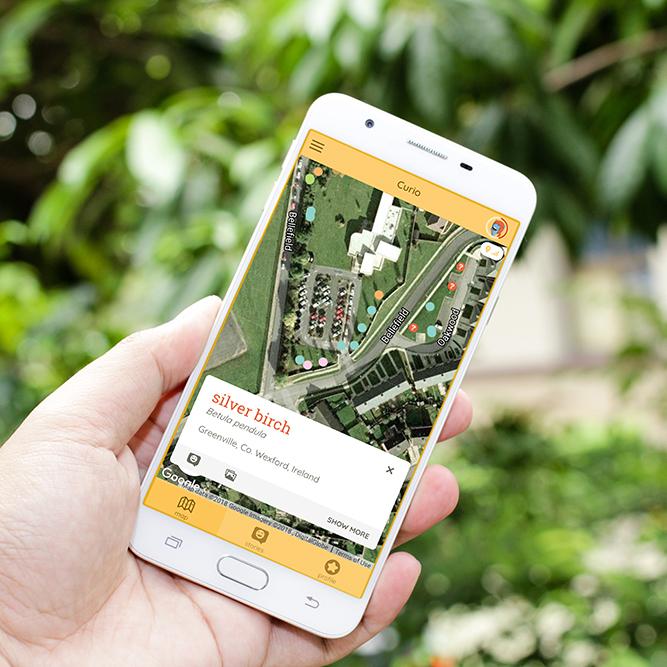Part Three of Curio Series: Q&A with Co-Founder, Conor Nugent
Posted on Categories Discover Magazine

This post is part three of a three-part series about how Curio can help citizens recognize, appreciate, and care for the highly beneficial green spaces around them. Special thanks to Megan Ray Nichols for putting all this together. Portions of this interview appeared in part one of this series.
Part One | Part Two | Part Three
What are the goals of this project? Our goal is to help connect people with both their local environment and the people who care for it. With more and more people living in cities, we have focused on hosting and collecting urban forest and plant data. Trees and plants do so much to help make cities livable places. By helping people learn more about trees and all the things they do for us, we hope to enrich people’s view of the world around them and help them better understand climate change and the broader environment. There are lots great projects in this space, and one of our big goals in creating Curio was to help support, connect, and showcase environmental projects and groups through the platform and tools we have developed.
How did you get started? My good friend Paul and I knew about all the good things that were happening in terms of the availability of data on the environment and the world in general. These range from amazing initiatives like the NASA LandSat and European Space Agency (ESA) Sentinel satellite imagery programs to the the Open Data movement. We were also conscious of the need to make that data accessible to and usable for people.
Initially, we had some ideas about how satellite imagery could be used to give an overview of the urban forest. Soon, we started guiding a crowdsourced effort to gather data on the ground. We received funding from the European Space Agency to investigate our ideas, which led to the Curio Canopy project. In that work we used the amazing Google Earth Engine Platform to process high resolution imagery and to create detailed maps of canopy cover.
We also started building the Curio outreach and education platform for viewing and collecting data. Things snowballed from there, and we have been focusing more and more on the Curio platform as a standalone education and outreach tool.
What are your biggest findings to date? Lots of lessons have been learned along the way. Posting online and contributing to citizen science projects can sometimes be intimidating, even if you are enthusiastic about but new to a field. We recently launched a “questions” feature, which slightly changes the dynamic. Members of public can post a story that might contain a question. A panel of our expert users are then alerted and can reply. It’s been really nice and fascinating seeing the conversations that have been initiated and the knowledge shared as a result.
Why do you need the help of volunteers to collect data? Our users’ contributions make so much possible. Every tree, photo, story or observation collected adds to a global database that can be used for a range of scientific, planning, operational, and educational purposes. For instance, in the case of a threat like Emerald Ash Borer (EAB), which is sadly sweeping across the USA, Curio can be used to map ash trees, educate the public about the issue, identify infections, plan inspections, and track the spread of EAB. Another completely different use-case is that of Hivilan Utbildning College in Sweden, who have used Curio to map their campus trees and turn them into an educational resource for their students and the public. We currently make available data on 2.1 million trees worldwide through a combination of inventory and citizen sources. We feel that only good things will happen by connecting people and helping make data available in a user-friendly way.
Want more citizen science? Check out SciStarter’s Project Finder! With 1100+ citizen science projects spanning every field of research, task and age group, there’s something for everyone!
 Megan Ray Nichols
Megan Ray Nichols
Megan Ray Nichols is a freelance science writer and the editor of Schooled By Science. She regularly writes for The Naked Scientists, Astronomy Magazine, and IoT Evolution. When she isn’t writing, Megan enjoys exploring new hiking trails, finding a new book to read or catching up on episodes of Dr. Who. Keep in touch with Megan by following her on Twitter and subscribing to her blog.